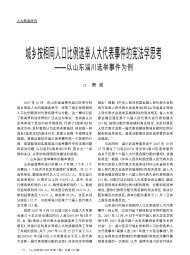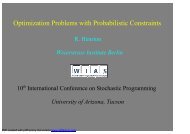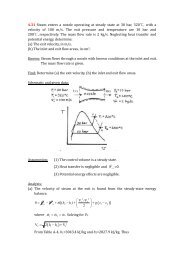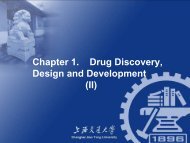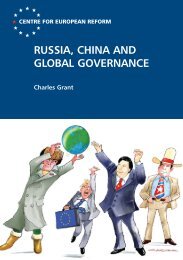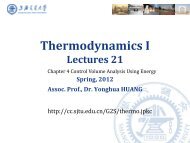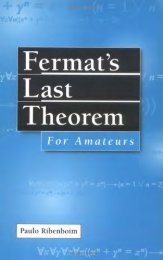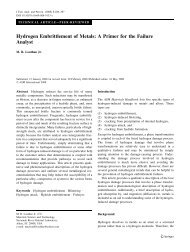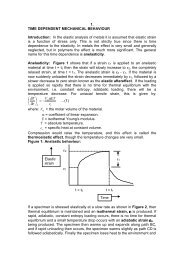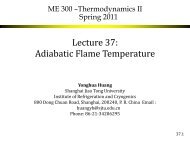The Making of the Apartheid Plan, 1929-1948* - CC
The Making of the Apartheid Plan, 1929-1948* - CC
The Making of the Apartheid Plan, 1929-1948* - CC
You also want an ePaper? Increase the reach of your titles
YUMPU automatically turns print PDFs into web optimized ePapers that Google loves.
376 Journal <strong>of</strong> Sou<strong>the</strong>rn African Studies<br />
Downloaded by [Shanghai Jiaotong University] at 18:42 19 September 2012<br />
thought <strong>the</strong> basic idea had been sound, with only a third <strong>of</strong> Afrikaners believing it was<br />
bad. 17 Table 1 gives <strong>the</strong> responses in full.<br />
<strong>The</strong> poll question did not define apar<strong>the</strong>id, but it can be assumed that <strong>the</strong> African or<br />
coloured respondents did not yearn for undiluted white supremacy, but ra<strong>the</strong>r for <strong>the</strong> more<br />
refined apar<strong>the</strong>id version <strong>of</strong> <strong>the</strong> 1980s. According to this, each population group as<br />
designated by apar<strong>the</strong>id was held responsible for its ‘own affairs’, with representatives from<br />
each group sharing in decision-making about ‘general affairs’. O<strong>the</strong>r polls show that<br />
members <strong>of</strong> apar<strong>the</strong>id’s statutory groups at present consistently name someone from <strong>the</strong>ir<br />
own group as <strong>the</strong> most popular leader.<br />
Finally, <strong>the</strong>re are <strong>the</strong> approaches that emphasise <strong>the</strong> way in which apar<strong>the</strong>id deviated<br />
from <strong>the</strong> mainstream teachings <strong>of</strong> <strong>the</strong> Christian church and Western European liberal<br />
democratic experience. Moodie sees apar<strong>the</strong>id as conceived largely by exponents <strong>of</strong> a ‘neo<br />
-Fichtean’ romantic nationalism. He links this volksnasionalisme to German nationalism<br />
and National Socialism, and calls <strong>the</strong> belief that God made <strong>the</strong> Afrikaner people <strong>the</strong> object<br />
<strong>of</strong> his saving activity a ‘Christian heresy’. 18 A recent study by Furlong makes <strong>the</strong> same<br />
connection between German and Afrikaner radical nationalism. It argues that Malan’s<br />
National Party (NP), a paramilitary mass movement called <strong>the</strong> Ossewa Brandwag (OB) and<br />
Oswald Pirow’s New Order (NO) formed an ‘interconnecting web’. <strong>The</strong> Nationalists in <strong>the</strong><br />
Transvaal, in particular, while never becoming a Nazi-style movement ‘in a real sense’,<br />
represented a ‘hybrid variant’ <strong>of</strong> ‘authoritarian and populist ingredients, reminiscent,<br />
although never an exact facsimile, <strong>of</strong> European fascism.’ <strong>The</strong> study makes a strenuous and<br />
<strong>of</strong>ten tortuous effort to underline <strong>the</strong> similarities between apar<strong>the</strong>id and Nazism, for<br />
instance between apar<strong>the</strong>id’s proscription <strong>of</strong> inter-racial sex and <strong>the</strong> Nazi race laws. 19<br />
This article will first look at Afrikaner nationalism in <strong>the</strong> nor<strong>the</strong>rn and sou<strong>the</strong>rn regions<br />
<strong>of</strong> <strong>the</strong> country in <strong>the</strong> 1930s and 1940s. It argues that <strong>the</strong> development and dissemination <strong>of</strong><br />
apar<strong>the</strong>id as <strong>the</strong> operational ideology <strong>of</strong> Afrikaner nationalism was a project that originated<br />
in <strong>the</strong> church in <strong>the</strong> Orange Free State and in <strong>the</strong> political and academic circles <strong>of</strong> <strong>the</strong><br />
Western Cape ra<strong>the</strong>r than in <strong>the</strong> Transvaal-based Afrikaner Broederbond. It discusses this<br />
with reference to <strong>the</strong> debate in mission circles <strong>of</strong> <strong>the</strong> DRC, <strong>the</strong> efforts <strong>of</strong> <strong>the</strong> Cape National<br />
Party and Die Burger to find a counter to <strong>the</strong> ideology <strong>of</strong> <strong>the</strong> ruling United Party (UP), and<br />
<strong>the</strong> intellectual contributions <strong>of</strong> Afrikaner academics in Stellenbosch and Cape Town.<br />
A Tale <strong>of</strong> Two Regions<br />
<strong>The</strong>re are two particularly strange features in <strong>the</strong> historiography <strong>of</strong> Afrikaner nationalism<br />
and <strong>the</strong> rise <strong>of</strong> <strong>the</strong> apar<strong>the</strong>id ideology during <strong>the</strong> 1930s and 1940s. <strong>The</strong> first is <strong>the</strong> assertion<br />
by Moodie and Furlong <strong>of</strong> a linkage between <strong>the</strong> Afrikaner nationalist movement and<br />
German nationalism <strong>of</strong> <strong>the</strong> 1930s. No one can quibble about <strong>the</strong> OB and NO, but Malan’s<br />
NP and <strong>the</strong> Afrikaner Broederbond are painted in similar, albeit more muted, colours. At<br />
a superficial level, <strong>the</strong> assertion may seem plausible. In <strong>the</strong> Transvaal, several prominent<br />
members <strong>of</strong> <strong>the</strong> Nationalist intelligentsia actively involved in elaborating a new racial<br />
ideology had Nazi sympathies, yet later became stalwart members <strong>of</strong> <strong>the</strong> NP and <strong>the</strong><br />
Afrikaner Broederbond establishment. This was true <strong>of</strong> L. J. du Plessis, perhaps <strong>the</strong> most<br />
influential <strong>of</strong> all Broeders, H. G. Stoker, <strong>the</strong> leading Calvinist thinker, Piet Meyer, deputy<br />
17 <strong>The</strong> source <strong>of</strong> <strong>the</strong> data is a survey conducted and published by <strong>the</strong> Cape Town-based Institute for Reconciliation<br />
and Justice (www.ijr.org.za). It was undertaken at <strong>the</strong> end <strong>of</strong> 2000 and beginning <strong>of</strong> 2001, and involved 3,727<br />
interviews conducted in <strong>the</strong> language <strong>of</strong> choice <strong>of</strong> <strong>the</strong> respondent.<br />
18 T. D. Moodie, <strong>The</strong> Rise <strong>of</strong> Afrikanerdom (Berkeley, University <strong>of</strong> California Press, 1974), pp. ix, 15.<br />
19 P. Furlong, Between Crown and Swastika: <strong>The</strong> Impact <strong>of</strong> <strong>the</strong> Radical Right on <strong>the</strong> Afrikaner Nationalist Movement<br />
in <strong>the</strong> Fascist Era (Johannesburg, Witwatersrand University Press, 1991), pp. 102, 224–226.



